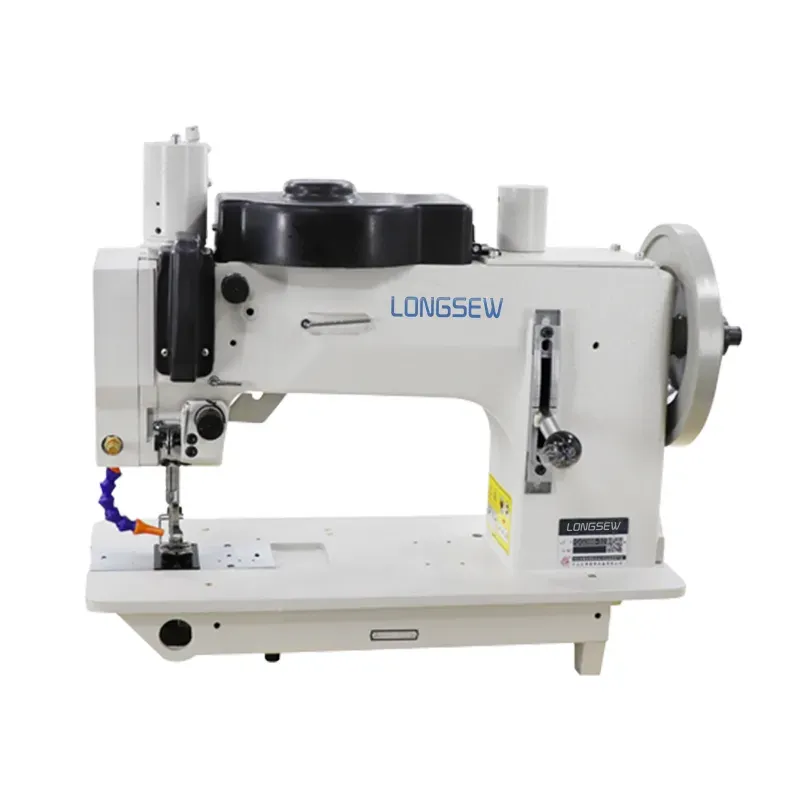Automated Sewing Machines for Effortless and Efficient Fabric Crafting Solutions
The Evolution and Advantages of Auto Sewing Machines
In the world of textile and garment production, the advent of technology has revolutionized traditional practices, leading to the emergence of automated solutions. Among these advancements, auto sewing machines stand out as a pivotal innovation that has transformed the way clothes are made. These machines integrate sophisticated technology, allowing for increased efficiency, precision, and versatility in sewing operations.
Auto sewing machines are defined by their ability to operate with minimal human intervention. This automation is achieved through the incorporation of computer-controlled systems, sensors, and advanced software that regulates every aspect of the sewing process. Traditional sewing methods require substantial manual labor and are often prone to human error. In contrast, auto sewing machines ensure consistency in stitching quality, speeding up production rates significantly. As a result, manufacturers can keep pace with the ever-increasing demand for fast fashion, delivering products quickly while maintaining high standards.
One of the primary advantages of auto sewing machines is their efficiency. In conventional sewing lines, workers must manually guide the fabric through the sewing machine, which can lead to fatigue and inconsistencies over time. With auto sewing machines, the process is mechanized. The fabric is fed through the machine using automated systems that ensure a uniform output. This not only expedites production but also guarantees a level of quality that is difficult to achieve manually. It can produce thousands of stitches in a short amount of time, making it ideal for high-volume productions.
auto sewing machine

In addition to speed and efficiency, auto sewing machines also offer remarkable accuracy. The integration of computer technology allows for precision in stitching patterns, measurements, and fabric handling. This level of precision reduces material waste, which is critical in an industry that often grapples with sustainability issues. By minimizing fabric waste and ensuring that each garment is cut and sewn to exact specifications, manufacturers can achieve significant cost savings and reduce their environmental footprint.
Versatility is another key benefit of auto sewing machines. Modern models are designed to handle a wide variety of fabrics and sewing techniques, making them valuable assets for diverse garment types. Whether it’s stretchable textiles, delicate materials, or heavy-duty fabrics, auto sewing machines can easily be programmed to adapt to different requirements. This adaptability opens new possibilities for designers and manufacturers, allowing them to innovate without being restricted by the limitations of traditional sewing methods.
Furthermore, the shift towards automation in sewing processes does not only benefit large manufacturers. Smaller workshops and home-based businesses can also leverage the power of auto sewing machines. With advancements in technology, these machines have become more accessible, affordable, and user-friendly, empowering entrepreneurs to elevate their craft. They can produce high-quality items in lesser time, competing with larger firms while maintaining a personal touch in their products.
In conclusion, auto sewing machines have undeniably become a game changer in the textile industry. Their ability to combine speed, accuracy, and versatility not only enhances productivity but also addresses key challenges faced by manufacturers today. As technology continues to evolve, we can expect further innovations in auto sewing machines that will continue to support the growth of the fashion and textile sectors. Embracing these advancements not only results in higher output but also paves the way for a more sustainable and efficient future in garment production. Whether for mass production or small-scale tailoring, auto sewing machines are set to play a crucial role in redefining the art of sewing.
-
Industrial Cylinder Arm Sewing Machine: Revolutionizing Heavy-Duty SewingNewsJul.28,2025
-
Cylinder Arm Sewing Machine: Perfect for Special Sewing ApplicationsNewsJul.28,2025
-
Cylinder Bed Sewing Machine: Essential for Sewing Complex MaterialsNewsJul.28,2025
-
Heavy Duty Sewing Machine: The Essential Tool for Industrial ApplicationsNewsJul.28,2025
-
Computerized Pattern Sewing Machine: Revolutionizing Precision StitchingNewsJul.28,2025
-
Heavy Duty Industrial Sewing Machine: Power Meets PrecisionNewsJul.28,2025
-
Leather Sewing Machine: The Industrial Standard for Tough MaterialsNewsJul.18,2025





























